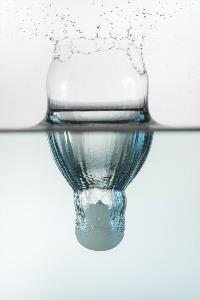Engineering news
The work, published in the Journal of Fluid Mechanics, demonstrates the unique differences in how water impacts rigid and elastic bodies.
It could pave the way for designs for inflatable speedboats that can absorb wave energy and provide a smoother ride for passengers.
“Rigid and elastic materials interact with the water surface quite differently," said Randy Hurd, a PhD candidate at USU and lead author on the study. "When an elastic body impacts the surface, the material deforms and oscillates significantly which changes the water-impact physics compared to a rigid body.”
Hurd’s team dropped flexible elastomeric spheres into a tank of water. They used high-speed cameras recording at 2000 frames per second to reveal the unique splash curtains and air-filled cavities that formed in the water after impact, as well as the way the spheres transformed and transferred energy.

The researchers hope to use the data to predict how water will interact with different types of material. “Being able to predict water interaction from a materials perspective is an important first step in understanding which material types would be best for developing an inflatable watercraft capable of providing a smoother ride over a choppy surface,” said Hurd.
The researchers collaborated with the United States Office of Naval Research, and say the work could be particularly useful for organisations that have to deploy watercraft in rough seas.
Leading yacht designer Nigel Irens, who designed the yacht that Ellen MacArthur used to break the world record for solo circumnavigation of the Earth in 2005, told Professional Engineering it was a 'wonderful' development.
“Some degree of elasticity is actually structurally very desirable because when impact occurs between water and some kind of a floating object, if something is too rigid it's more likely to break,” he explained.
Irens said that the materials used for boat technology hadn’t changed too much in recent years, and that there was sometimes too much reliance on carbon fibre, particularly in his field of yachts. “What often happens is when a new product comes along there are some who extol its virtues, and some who rubbish it and normally it settles down and finds it place and has certain advantages that are useful under certain conditions,” he said.